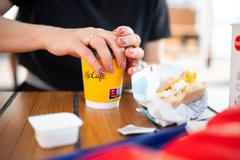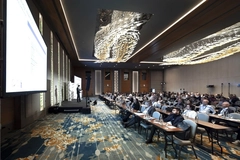Tetra Pak unveils homogenizers for greater sustainability and less costs

Tetra Pak has expanded its homogenizer portfolio with the launch of the Tetra Pak Homogenizer 15C and the Tetra Pak Homogenizer 20C, for a reduced machine footprint. The latest additions of the processing equipment aim to enhance flexibility while reducing complexity and energy consumption.
Traditional homogenization requires two separate devices — commonly referred to as first-stage and second-stage. However, Tetra Pak has reimagined this process by integrating both stages into a single entity.
The company’s HD21 homogenization device allows for the necessary homogenization process and pressure adjustments within a single machine, using one pressure adjustment. This innovation enables an energy reduction of up to 25% compared to the devices using conventional homogenization technology.
A Tetra Pak spokesperson tells Packaging Insights: “Customers need reliable, efficient homogenization performance without adding to the cost of the line. This is a challenge for many F&B producers, especially those with less complicated processing requirements or less abrasive applications, such as dairy and ice cream.”
The company says the device is suitable for integrators and producers of certain other products, including fruit juices, desserts, dressings, and sauces.
Innovative design with simplicity
The newly launched two-in-one solution, available with the Tetra Pak Homogenizer 15C and the Tetra Pak Homogenizer 20C, features two components — fewer than the six components found in traditional homogenizers.
Fiona Liebehenz, vice president of key components plant solutions and channel management at Tetra Pak, says: “Homogenization is critical in many F&B production processes. But not all products or factories require complex machinery, so we took on the challenge to simplify the current new solutions to meet a broader range of our customer’s needs.”
“We’ve created a flexible machine with fewer parts, which reduces both the initial investment and long-term maintenance costs. Both aspects matter to our customers.”
 The end-to-end solutions give Tetra Pak opportunities to collaborate with stakeholders across the value chain.The company says that this simplification reduces complexity and lowers upfront investment.
The end-to-end solutions give Tetra Pak opportunities to collaborate with stakeholders across the value chain.The company says that this simplification reduces complexity and lowers upfront investment.
“To reduce the cost of a combined device for smaller plants and those that produce a more focused product portfolio, HD21 equipment is designed with a fixed back pressure ratio. This is useful for many customers, as it’s important not to invest in or operate machines that run at higher pressures than is required for the product,” shares the company’s spokesperson.
Enhanced durability
The device reduces the ongoing maintenance requirements for manufacturers, according to Tetra Pak. Additionally, the company has addressed the issue of asymmetrical wear in homogenization parts.
Previously, uneven wear required component replacement, but the new homogenizers utilize symmetrical wear parts that can be turned by operators, doubling their lifespan and reducing maintenance expenses.
“The HD21 utilizes Tetra Pak’s turnable wear part design. This means that HD21 homogenization components like valves and seals are designed symmetrically so they can be used twice. When one side becomes worn, the operator simply turns it over so it can be used again,” the spokesperson explains.
“Meanwhile, operating at lower pressures not only reduces energy cost, it also means less wear over time. The HD21 also benefits from a ten-year warranty against mechanical cracks to the pump block, as well as access to Tetra Pak’s global service network and spare parts supply. These solutions extend the lifetime of the device to over 25 years. They also increase uptime and reduce the cost of production, operation, and servicing.”
Cutting resource use
The HD21 homogenization device is said to reduce the need to use resources to make and deliver replacement parts.
“Water consumption for piston cooling is one factor. A serial water cooling system, as used by the HD21, consumes 67% less water than a parallel system,” the spokesperson details.
“We focus on an integrated approach to drive the transition to more secure, sustainable, and resilient food systems. This builds further on the company’s lead in the Global Dairy Processing Task Force, which, as part of the ‘Pathways to Dairy Net Zero’ climate initiative, aims to explore the innovative systems and technologies needed to further drive down GHG emissions.”
Last year, Tetra Pak and French company Lactalis launched an “industry first” carton package from certified recycled polymers linked to used beverage cartons. The partnership focused on material circularity and reducing dependence on fossil-based resources.











